Over the past year of Covid-inspired isolation, I’ve seen things I’d never seen before. Surgical masks with pacifiers for babies to wear and keep quiet. Viking-helmeted “demonstrations” in the Capitol. And a unicorn: my entire family sitting together, binge watching two seasons of a television show, with all five of us enjoying it. The Umbrella Academy offered interesting character development, snappy humor, bizarre storylines with suspenseful conflicts, and enough stylized costumes and special effects to replicate the wackiness I’d watched on the tube and read in the comics created by Gerard Way and Gabriel Ba.
When I heard it announced that Dark Horse Comics was joining Studio 71 Games to follow up with a Kickstarter game campaign, it sounded right up my alley – the kind of alley where siblings suddenly drop from the sky in varying years of the early 1960s.
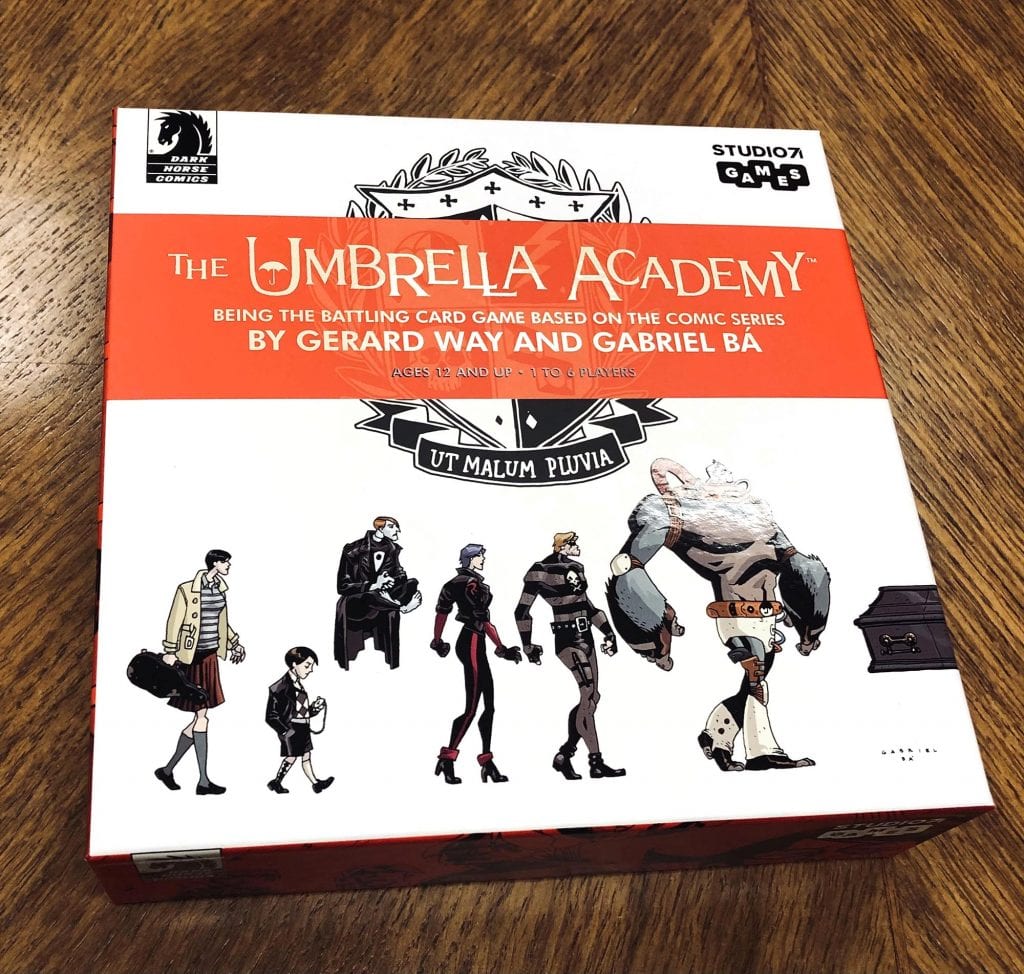
Plays up to six players? Perfect! Co-op? Even better, as that leads to less fights in our house! Art done by the creators? Ideal! Maybe even worthy of remembering my Kickstarter password!
Is it a cash grab? Sure, but what board game isn’t? Seriously, what game isn’t out there to snag a couple bucks for their designers and marketers. I can’t even recall playing a session where the victor won by being most altruistic. Cash grabbing aside, is the game any good?
Well….
The Umbrella Academy arrived a few weeks ago, and while the box was smaller than I expected, I only ordered the base game and that just included cards and an obsolete rulebook. Yes: obsolete. Apparently, the game is still being play tested, but like so many cockamamie plans in the graphic novel, the game wasn’t thoroughly thought out before being released.
It’s pretty, though. The artwork on the cards? Good stuff! Hazel’s and Cha Cha’s oversized heads brought back the charm, and how could I not grin at the nostalgia seeing Zombie Robot Gustave Eiffel’s image, ripped straight from the graphic novel?
I Heard A Rumor The Rules Don’t Make Sense
Updated rules are available on the internet, but the updated version doesn’t address all of the issues I came across. It begins with the first line. The Aim of the Game is “Work as a team to battle a set number of villains and survive the Final Battle!” But, the number of villains isn’t set.
That inconsistency is consistent, if such a thing is possible. A chart helps players with the card breakdowns, depending on the number of players. For 5-6 players, six villain cards of attack strength 10 should be used. But the game only includes four villain cards of attack strength 10. Also, you shouldn’t confuse your villain cards with your villain attack cards, though both of them have attack strengths. Figure 2 informs me that all cards have an attack & heal value, which could be specific to the Hero Attack cards. Except, some of the Hero Attack cards (story) don’t have a heal value at all.
The Umbrella Academy allows you to play as any of the seven Hargreeves children, even the Horror (Ben), who (tiniest of spoilers) is dead. Each character possesses a unique Special Hero Power, which are reasonably well replicated here. It’s confusing why the game didn’t list them in order, as a significant detail in the story is that Space Boy/Luther is Number 1. The character whose only given name is Number 5 was listed fourth. Huh? Vanya was properly included as Number 7, so at least they got that right.
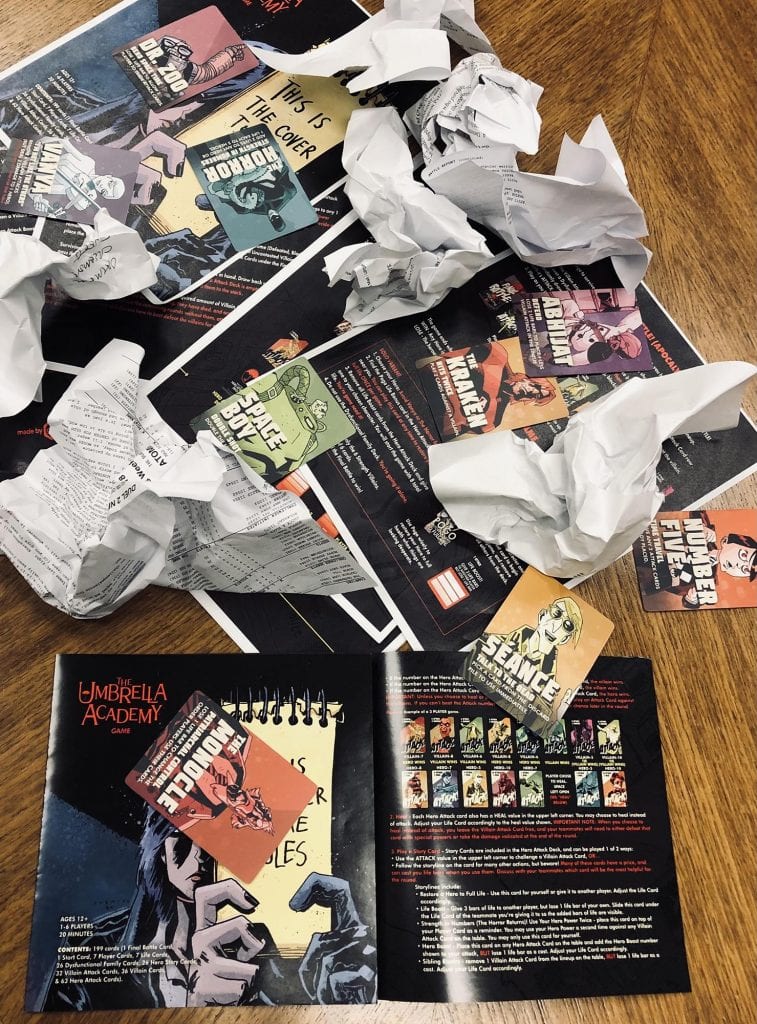
You say numero, I say nombre. Whatever. Is it good?
The Special Hero Powers aren’t clear either, as the wording on the cards doesn’t match the rules. The Rumor’s card says she can “Tell a villain to die.” Consulting the rules clarifies that it does not actually kill a villain by removing a villain card. Instead, it defeats a villain attack card. Space Boy’s card says “Double the hit on any card.” The rules? “Pick a Hero Attack card on the table and double the damage.” Except hero cards don’t have damage (or hit). They have attack. Séance’s card says “pick a card from the discard pile to use immediately.” The rules? “Pick a card from the Hero Attack discard pile and play it against a Villain Attack Card still on the table.” So he can only use it to attack? Or can he heal with it?
Minor qualm: as the Kickstarter achieved some stretch goals, I received six additional player cards with their own unique abilities. The discrepancy there is that each of the stretch cards instructs players to lose a life bar (or two) to activate their power. In the original instructions, it says using a special power costs one life bar – but that’s not listed on the cards. Should the stretch cards cost two? Should the original seven have that rule on their cards? Also, the Deluxe and White Violin KS versions each included a game board that apparently isn’t big enough to display the cards.
Save the World?
Setup is easy. Line up seven villain attack cards beneath the first villain card (in a 2-player game), deal out player cards and Hero Attack cards, and battle the villains by beating their attack cards. Not much to it. Play is surprisingly fluid. Or it should be.
Before engaging with the villains, flip a card from the Dysfunctional Family Deck and suffer the consequences. A central concept of the show and comic is how Reginald Hargreeves messed up his adopted children, so conceptually, this should be good.
But the challenges seem arbitrary. Most either force players to lose life bars or add extra attacks – which will force players to lose life bars. No locking Klaus in a mausoleum to confront his ghosts. No stranding Space Boy on the moon for years. None of the outlandish trials Dad forced his children to endure. There was so much unmet potential here, but at least I appreciated the names on the cards.
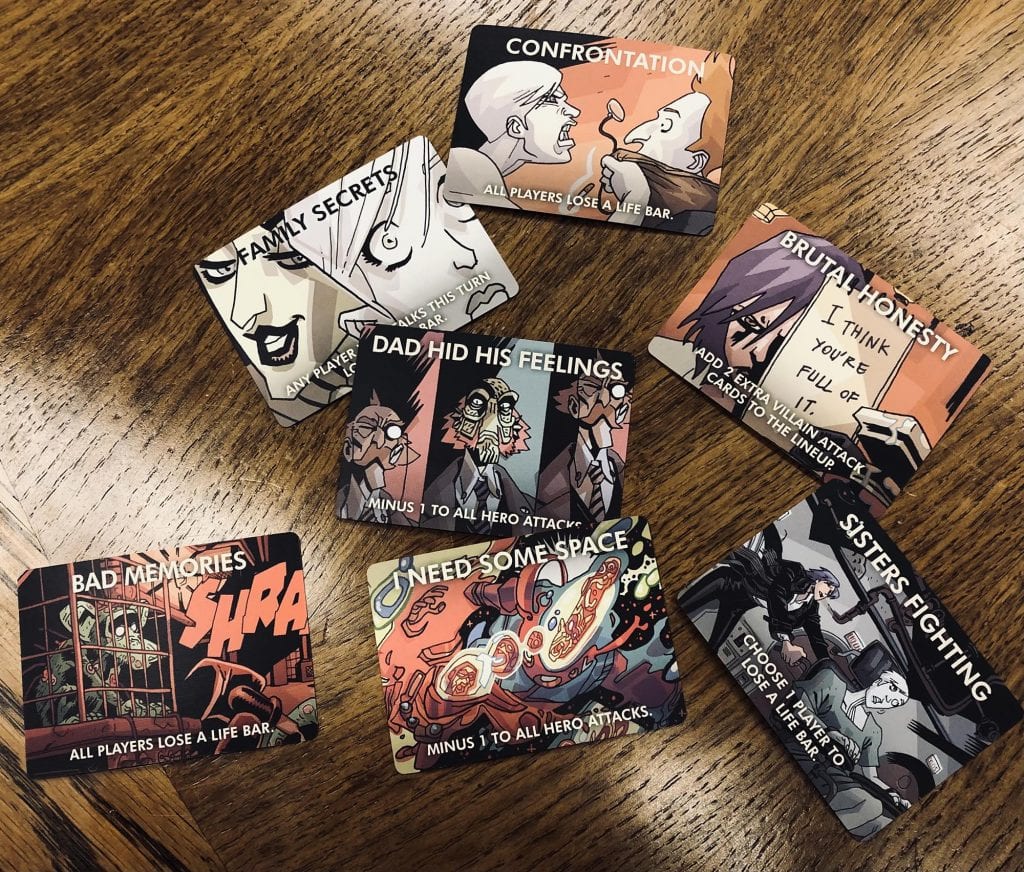
Each player must face the next villain in the line by attacking, blocking, healing, or utilizing a story card. Attacking and blocking make sense. Healing? The rules explain “You will need to take that damage. Distribute the damage across the team… adjust all life cards accordingly.” It also explains at the round end, the total damage from all uncontested villain attacks (sic) cards remaining in the lineup. When do you take that damage? When you heal? At the end of the round? Can you assign damage to dead characters? Can a Restore a Hero to Full Life Card work to bring a character back to life? The Round End indicates a teammate with no life bars remaining has died and is out of the game. Maybe that’s only at round end? Except the Commonly Overlooked Rules explicitly say “If a player dies (their life bar card only shows the word DEATH) they are out of the game.”
Bypassing the rules ambiguities, the rounds play efficiently. Compare Hero Attack with villain. If the hero has a higher attack then the villain attack card is discarded. If the hero has equal attack, the hero (heroes?) takes half the damage rounded up, and the villain attack card is discarded. For healing, take the hit, and add the villain attack card to the final battle. Story cards have their own issues, but those are minor by comparison. Not a bit of strategy involved. Lucky draws win. Poor draws die. If one hero dies, the remaining Hargreeves siblings are expected to keep battling for future rounds. More accurately, if one hero dies, everyone’s gonna die.
Complete the set number of rounds, and you’ll face the Final Battle! Flip one of your completed villain cards and put it first in the line of villain attack cards made from the deck of cards accumulated when you healed or used story cards. Beat this line, and you win!
Well, except…. Can you heal during the final battle? Can you use a story card that won’t defeat the current villain? Will those villain attack cards remain? Step 3 in the rules says you can heal or play story cards, but they’d have to be handled differently, as there is no longer an Apocalypse card to use to set those villain attack cards aside.
Leave It On the Moon
Would the whole game be workable with an extensive FAQ on BGG? Maybe. Unlike some of the more fiddly games I’ve played (and admired!), Umbrella Academy did not require me to consult the rules again and again. Rather, the times I consulted the rules left me more frustrated than the original issues. The investment to payoff ratio is imbalanced, and not in a good way.

The 20 minute playtime on the cover of the rules is believable. It’s quick. It’s a bang-bang game that takes little time to set up, play, and clean up. To understand? You’ll need to use Number 5’s power of time travel for that. Don’t forget to listen to Dolores and subtract the two from the one. And if that didn’t make sense to you, The Umbrella Academy Game probably won’t either.
Read the comic book. Watch the television series. Skip the game.


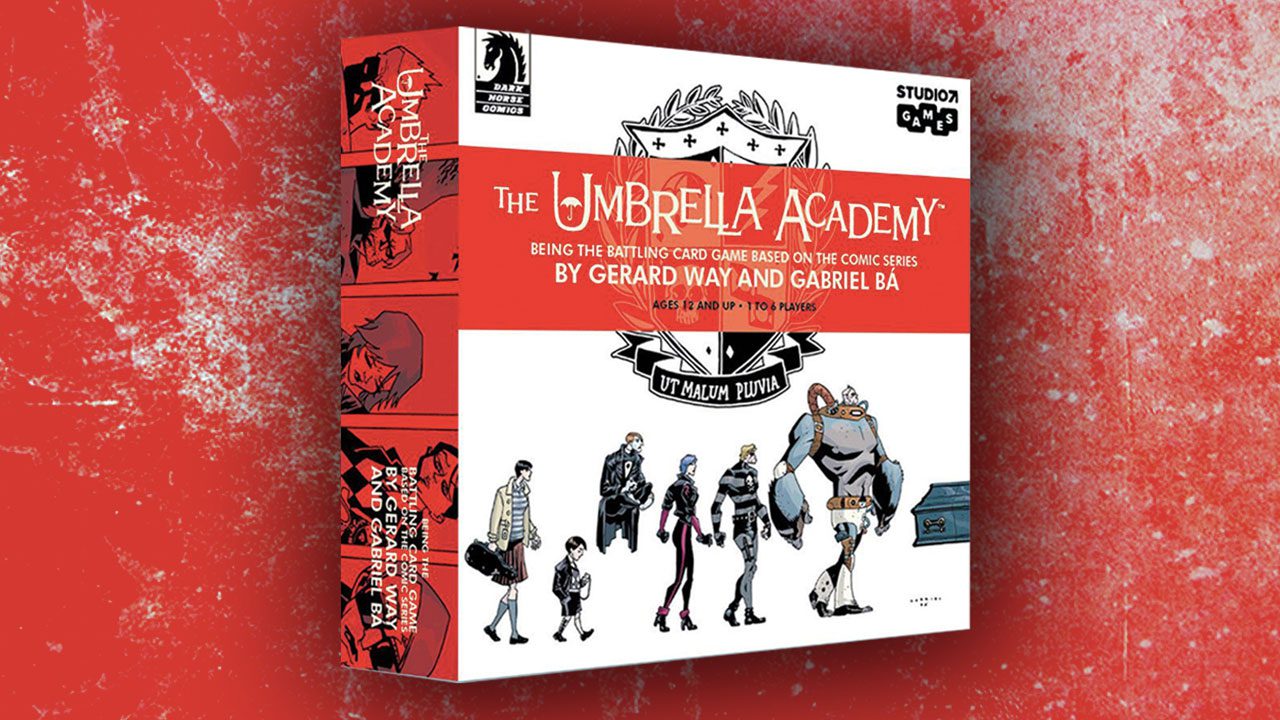

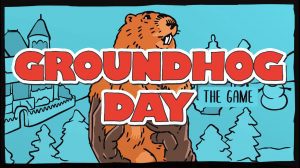






Wow, and I thought the show was confusing. Thanks for the review, Jim. I like card based games, but I don’t think I have ever played a co-op one. My wife is the most competitive card player I have ever encountered, (I blame her time at SCAD), and a stickler for rules. I think even she would have difficulty with this one. Thanks for saving me some $$. I look forward to more reviews from you!
Thanks for the review. This helps a lot; this is a game my son would have wanted to try, but I think I will wait until someone has written a better game.